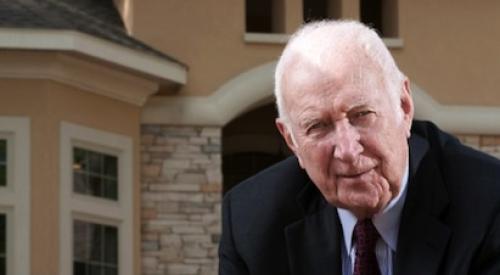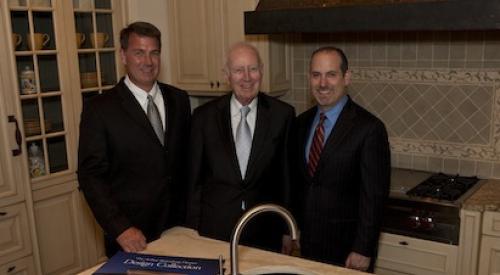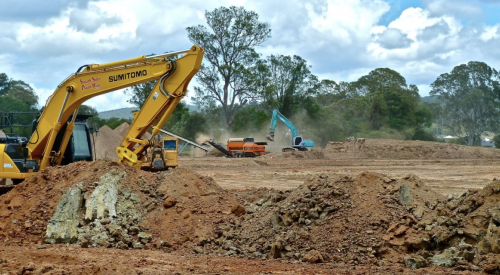| The Arthur Rutenberg Homes network of 28 franchises sells homes from 65 model home centers throughout Florida. | |||||||||||||||||||||||||||||||||||
|
|
|
|
Art Rutenberg still outworks all 82 employees at the Clearwater, Fla., headquarters, overseeing a company that had 609 closings in 2002 for $268 million in revenue.
ARH has 28 franchises and 60 communities scattered throughout Florida but no franchises out of state - yet. "Our plan is to get to 50 franchises in Florida, 40 independents and 10 company-owned, before we expand out of state," executive vice president David Hanrahan says. "After that, we want to move up the East Coast."
The company currently owns four franchises, and two of those are new. "We decided it's necessary for us to eat our own cooking," Rutenberg says, "to use all the pieces of our system so we're sure they work well."
ARH produces luxury homes averaging $500,000 in price (excluding land). "Some veteran franchisees say all they really want is the brand, and that alone is worth the franchise fee [averaging 3.5%]," Rutenberg says. "But we spend about $1.1 million a year on design. We turn over our entire library of 80 plans every three years, so on average we have $3.3 million in design investment that a new franchisee can use the first day."
All working drawings are done in-house. "Our estimators use our package to do takeoffs," Hanrahan says. "We produce standard bills of materials for every plan and support 15,000 options."
Each franchisee can compare costs against every other franchisee's. "We break the state into nine purchasing zones," Hanrahan says. "We identify who's getting the best price on every line item in each zone. We've had cases where one franchisee was buying lumber from the same supplier at a significantly higher price than another. All it took was one phone call and 15 minutes to match the better price.
"Our purchasing system is Art's baby. The IT budget is about $1 million a year, $600,000 on software alone, and we spend more on purchasing than anything else. Cost control is the most important area where a franchisee makes back the investment in fees."
ARH controls product quality through a unique aspect of its franchise agreements. "We have full approval rights on all models," Hanrahan explains. "Franchisees can't open a model home unless we sign off on it. We walk all of them at several stages of construction, and they have to make any changes we require. And in all purchase agreements, it clearly states the customer's home will ‘meet or exceed' the quality of the model home. If a customer sees drywall imperfections during a visit to a home under construction, he has the right to call the builder and say, ‘That's not model home quality.' We enforce model quality on behalf of our buyers. That's another Artism."
What Franchisees Say
Jacksonville builder Mark Refosko signed up for a Rutenberg franchise a little less than three years ago after a long career with a production builder. "I had to go through a lot to get it," he says. "They interviewed me relentlessly. They talked to every one of my previous employers. They even interviewed some of the people I managed and my customers."
Despite hefty franchise fees (he says he pays 4%), Refosko is sold on the system. "The biggest thing I got for the money was immediate recognition," he says. "Instantly, I was a big builder, not a little guy just starting out. To the vendors, I'm a 700-unit-a-year builder.
"I've sold 16 houses this year. I think we'll finish at 21 by year-end. My average price is $475,000, mostly on scattered lots. I couldn't have done this without the franchise."
Refosko says he spends six hours a day on the computer system and his nine employees average seven. On his own, he says, he might be better able to match the target financial ratios in Chuck Shinn's model for home builder profitability (see page 32) and hit Shinn's goal of a 12% bottom line. "Right now, my gross margins, after franchise fees, are running 15% to 17%, and I'm targeting a 7% to 8% bottom line," Refosko says. "As I increase my volume and do a better job negotiating with trades, I think I can get that up to 10%. On my own, I'd never get the land positions and volume I get with an Arthur Rutenberg franchise."
Bobby Lyons was among the first in Rutenberg's system and now has franchises in Fort Myers, Tampa and Pasco County. Combined, they did 80 units for $40 million last year.
"I'd say the value comes from the name, the designs and then from the computer system," Lyons says. He thinks Shinn's pretax target of 12% net profit is possible in the ARH system but difficult. "That's a hard number for anybody, not just a franchisee," Lyons says. "We get a lot back for our franchise fee. I don't have to pay an architect. The national buying program is another benefit. I think the fee is at least a break-even deal and worth it."












